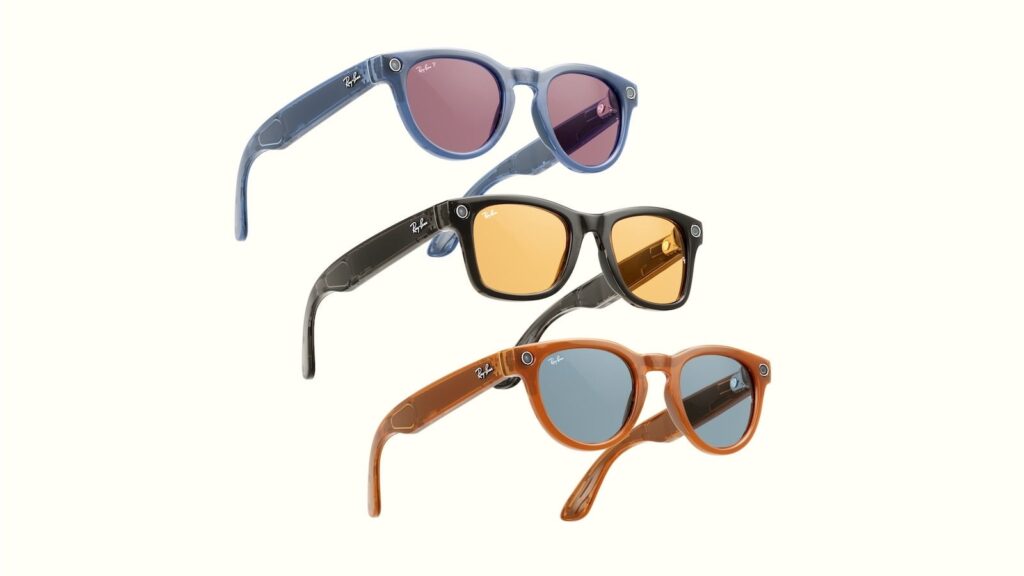Meta's latest AR glasses may launch soon—and they're rumored to start at $800, instead of $1,000. But are these glasses—and their price—worth the excitement?
Techtember is on the horizon, and you know what that means: a flood of leaks and rumors about the tech debuting this fall. Meta isn’t sitting it out—Bloomberg’s Mark Gurman reports that its latest smart glasses, codenamed ‘Hypernova,’ could launch as early as next month.
According to Gurman, Meta’s new frames may start at $800 instead of the expected $1,000. As a consumer, I can’t help but wonder if even $800 is worth it. After all, I drop more than a grand on a new smartphone every few years to keep my apps and connections up to date. Spending nearly the same on a pair of smart glasses—which likely need my phone to work—feels like a stretch.
So, let’s highlight what we know about Meta’s next-gen glasses so far and compare them to Meta’s most successful wearables to date, the $299 Ray-Bans. Are the new ‘Hypernova’ glasses worth the excitement, or should we hold onto our cash a little longer?
Price cut? Depends on who you ask.
Tech outlets are buzzing about the cheaper-than-expected price. Gurman says Meta will accept lower margins to increase demand for the product, and sure, that is good news. Who doesn’t like seeing something launch for less than anticipated?
But let’s not forget that the Meta Ray-Bans start at $299. If the ‘Hypernova’ debuts at $800, that’s a $500 jump. I can’t help but question how many Ray-Ban buyers will leap to this higher tier. The Meta Ray-Bans worked because they felt like normal sunglasses that just happened to snap photos and take calls…
But, of course, ‘Hypernova’ will be a different animal from the Meta Ray-Bans, which brings me to my next point.
Reportedly, Meta’s new AR glasses will feature a small AR display in the right lens—only visible to the wearer—which will show mini apps and alerts. You can even control content with the help of a neural input wristband—the same one that works with the Meta Orion AR glasses.
It sounds fancy, but I can’t say I’ve never heard of anything like it before. The Rokid Glasses, unveiled at CES 2025, offer on-lens Google Maps navigation, 2-way translation in 89 languages, and come in a lightweight frame. They have an MSRP of $599 but are still on preorder. They also don’t need a wristband to work.
And, let’s talk about the wristband. While I would initially balk at having to wear (and I guess, charge?) another device to use the ‘Hypernova,’ Gurman reports that it gives wearer gesture control over the glasses, a pretty unique feature. For example, you can pinch your finger and thumb to select items on the lenses.
Obviously, I can’t make super well-informed conjectures here, for the simple reason that ‘Hypernova’ haven’t been launched yet. For now, Meta’s 2025 smart glasses look like they’l have all the makings of cutting-edge tech, but I want to see how they compare to what’s already out there.

The ‘Hypernova’ glasses are shaping up to be impressive, but they also feel like a first draft. As a tech editor, I love the thought of wearing glasses that let me tap into apps with just my hand in the air. But the mom in me—the one who prioritizes practicality and budget—urges caution.
Why buy these glasses when Hypernova 2 is, apparently, already in the works? Perhaps it’s better to wait until Meta irons out the inevitable kinks.
And as CNET’s Katie Collins noted recently, the real question is whether AR glasses can ever replace smartphones. Right now, Hypernova doesn’t look like that product. It’s still more of a smartphone companion than a standalone device.
So am I excited? For sure. But skeptical? Also yes.
What I’d want to see
For $800, I want more than just notifications popping up in one lens. If Meta really wants people to choose Hypernova over their Ray-Bans—or even competitors like Rokid—it needs features that feel essential, not experimental.
For starters, I’d love to see seamless navigation built right into the display, like Google Maps that actually works without having to pull out my phone. I’d also like tight integration with Meta AI, so I could ask questions or translate conversations in real time without fumbling with a wristband. And while I’m dreaming, why not add some fitness tracking or health-related insights? Smartwatches already do it—why not glasses that are literally on your face all day?
Last thoughts
From the information I have now, Hypernova feels like a stepping stone—flashy and futuristic, but not essential yet. I’m torn between my inner editor, who wants to believe this is the start of a new era for AR, and my inner curmudgeon, who’s eyeing the price tag and saying, “Wait for version two.” Until Meta proves Hypernova is more than an expensive sidekick, my wallet’s staying shut.